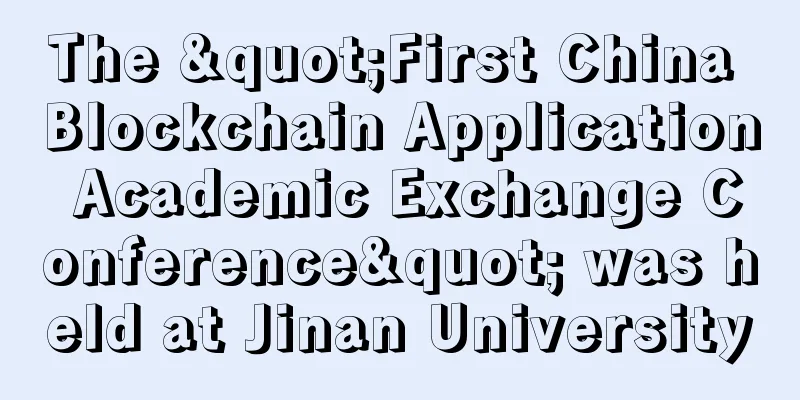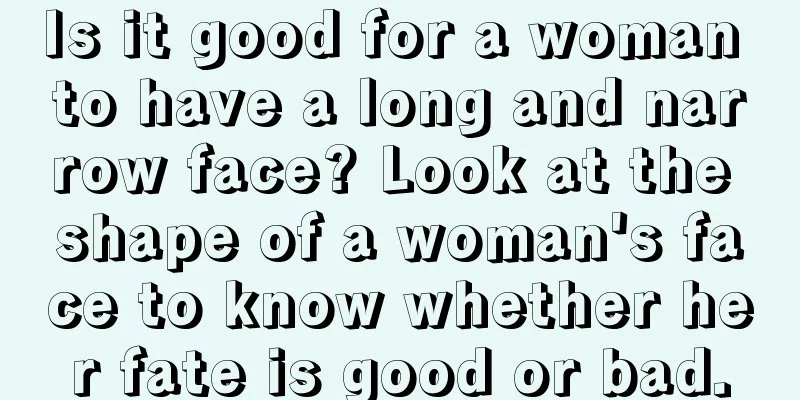DeFi Interview: How to participate in Web3? Which sub-sectors are worth paying attention to?

|
The "old world" has begun to loosen, and more and more bridges have been built to the "new world". Web3.0 is accelerating towards us. What exactly is it? What are the tracks worth paying attention to in Web3.0? How can we participate in it? On November 25, DeFi invited Ba Jin from the crypto investment institution 7star capital to take us through web3. What is Web3? Chris Dixon proposed the framework of read, write, and own. Do you agree? Let me first talk about what Web3.0 is. I will use Alibaba as an example throughout. Let's start with Web1.0: the first generation of the Internet. It is a one-way network platform that outputs content to users. Jack Ma's memoirs said that the inspiration for Alibaba's founding came from the Yellow Pages he came across during his stay in the United States. So the initial web pages gave you some navigation and information to see new news and content from all over the world. But such web pages are open source. This makes new companies like Google and Amazon possible. Next is Web2.0: 2.0 is about changing the one-way output of content from the platform to the interaction between users. It is represented by various social tools and review websites. The invention of smartphones has accelerated the start of interaction. The limitation is that data on the Internet is not interoperable. For example, on Taobao, you can chat, shop, and comment after shopping. But you cannot directly share Taobao shopping links on WeChat. Just like today, if you see a video on Douyin, you can't find it on Baidu. The interactive messages of these applications are submerged in many other closed, private, and opaque applications. And these messages are also mixed with various advertisements. Various data leaks. Various censorship restrictions. So Web3.0 allows information on websites to interact directly with information on the Internet and then push it to users. At the same time, user records will also be directly transmitted to the Internet. For example, one day Taobao, Xianyu and WeChat cooperated and merged. Then you can chat on one platform and shop while scrolling through your circle of friends. In this way, we can see that web3 is an Internet with minimal friction and cost in the transmission of information flow and value flow, and it is fully functional. I agree with the idea of read, write, own. Especially after we have started to get involved in some web3 projects. In fact, if we look back on the entire development of the unpopular sector DeFi last year, we will find that it is very similar to the entire development of web3. At the beginning, everyone went to uniswap to buy coins and add liquidity, right? Then the aggregator came out, and all the auxiliary tools came out, and you can interact more. Then came sushi's coin issuance and uni's airdrop. Uni's airdrop is special for web3. If you participate in the management of my products, I will give you some equity in my company. Since uni, all serious projects have prepared some airdrops to encourage you to participate. So why do we say that the blockchain industry we are in will be the development of web3? We said earlier that there were a lot of advertisements in web2 because the only way for website owners to make money seemed to be to post an advertisement on the web page. The invention of Bitcoin solved this dilemma very well. If you have enough traffic, you can issue digital currency. In addition, if the website owner migrates the website to IPFS storage and runs Ethereum code, it will naturally be censorship-resistant. Once these two steps are completed, we naturally need a digital identity. Even if it is just a decentralized web wallet that gives you a string of addresses. It will make your online experience freer and safer. So blockchain has become a part of web 3. What tracks (aspects) does Web3 include? Is there a simple framework to help us sort it out? The concept of Web3 is really huge. Almost all current blockchain projects can be classified into this concept. I found a picture from the Twitter blogger DeFi Miner. I think this mind map summarizes most of the projects. But this is just a grouping of projects based on their functions. If you have time, I still recommend you to read mapleleef's web3 document from 0 to 1. He summarizes the series of processes that everyone will encounter when entering the site based on the order of entry of a web3 user. Which sub-sectors are worth paying attention to? The project I am more optimistic about is AR. Arweave is located in the data storage layer of the Web3 stack. The data storage layer is based on smart contracts and functions as permanent storage. In the Web2 model, application providers store and manage user data so that users don't have to do storage and management. Web2 application provider servers are always online, and users are often offline. In the Web3 model, there is no centralized application server provider, so the entire data ownership paradigm needs to be changed accordingly. With permanent storage, all our files will not disappear. The only storage project that can do this is ar. In the era of Web2, if you want to find a photo of your wife Ni Ni, you need to use DNS first, then find the URL server on Baidu, and then the server will ask it for the image hosted on the local file system, the address is "/image.png". Assuming the server wants to cooperate, it will check the directory for /image.png, and if the file exists, it will return the file. If the file is moved, changed, the server is busy, or the server does not cooperate for any reason, you will never see this picture of Ni Ni. What will it look like in Arweave? You use a garbled hash similar to yours that starts with 0x to search for Ni Ni's photos. You will only locate the photo you want. All the above problems will not occur. Human development is to improve previous mistakes or improve better and more convenient ways of activities. Arweave provides such a logically centralized but architecturally and politically decentralized storage system to improve the previous centralized storage. Content-based addressing provides a logical interface. Based on the content address, no matter where the underlying data is stored in the architecturally and politically decentralized, huge computer network, it can always be parsed correctly. The project has four core technologies: 1. Blockweave: The project uses a new blockchain data structure called Blockweave, which is caused by the consensus mechanism and a specific block generation mode. In this data structure, nodes that want to mine do not have to store full node files like BTC and ETH nodes. As long as a node stores a certain historical block, it has a chance to be selected for block generation. The more it stores, the higher the chance of being selected. In other words, only nodes with random blocks can perform POW block generation. This mode reduces POW energy consumption and reduces the useless work of nodes. 2.POA: The consensus mechanism of the project is called POA (proof of access), which uses random numbers to randomly create a new block to verify a block that has appeared before. Compared with the chain structure used by ordinary blockchains to store all information on the chain, this consensus mechanism is more like a mesh structure, and the burden on node storage files is also smaller. Similarly, only nodes that know the selected random block can run POW to generate blocks. 3. BlockShadow: Nodes do not need to verify the entire storage file when verifying. When generating a block, the node does not hand over the entire storage file to other nodes for review. Instead, the node puts the storage content in the block and only transmits a hash value and an account list. This hash value represents this part of the content, and other nodes verify whether this hash value corresponds to the file pool. This method speeds up the verification efficiency and transfers part of the work to the off-chain. Similarly, when calling, only BlockShadow is needed to locate the stored block to complete the call. 4. Wildfire: In order to motivate nodes and solve the problem of nodes storing a large amount of invalid information, the project team has designed a reputation system called ALLA. Nodes can score each other, thereby motivating nodes to verify the stored content and ensure the health and effectiveness of the content. The results of this scoring are mainly used when calling stored files. After the user's request to call a file is sent through a node, multiple nodes that store the file will compete to respond to this request, and the node that completes the block will select the node with the best reputation to provide the file based on the reputation value. The difference between AR and FIL There are many differences between the economic models of Arweave and Filecoin. Filecoin operates on a pay-as-you-go model, which is very similar to the fee mechanism of AWS and Google Cloud. Unlike Arweave, Filecoin mainly provides temporary storage solutions rather than permanent storage solutions. Furthermore, in the Filecoin protocol, there are thousands of different contracts between users and nodes, each with different storage terms (such as price, duration, number of replications, etc.). In contrast, there is actually only one contract available on the Arweave platform: data is permanently stored. So in fact I don't think Arweave will compete directly with Filecoin (and similar variants). The two solutions may actually be complementary. In some cases, it is more cost-effective to store data permanently; in other cases, it makes more sense to pay for short-term storage. It is difficult to find another platform with a similar value proposition as Arweave. Although IPFS comes closest, files can still be discarded from the IPFS network. For example, Infura's IPFS pinning service deletes data that has not been accessed by users in six months. AR in Web3 We can first list the advantages of Arweave one by one. Arweave's original consensus and miner incentive mechanism ensure the permanence of storage. Permanent data preservation has always been a major issue in human history and is extremely important to mankind. Arweave can be used as the Library of Alexandria in the Web3.0 era to preserve data and continue to accumulate human wisdom. Arweave's decentralized nature can subvert the monopoly of centralized cloud service providers on the storage market. User data can avoid censorship, and at the same time, data can be stored in the cloud, bringing freedom of data distribution. Arweave's storage positioning is low-level enough to serve as "Layer0", becoming an indispensable part of blockchain development, and it has a wide range of uses and is extremely easy to get started. It is an ideal breeding ground for various decentralized applications. Next, let's look at Arweave's shortcomings. Arweave is too low-level. Due to architectural reasons, it cannot limit the standards of tokens and contracts. The development ecosystem is too flexible and may not be unified, resulting in the ecosystem being unable to work together. We may not understand Arweave for now, but we didn’t see through Bitcoin at the beginning. Charlie Munger once said: "In order to save computing space, the human brain is reluctant to make changes. This is a form of avoiding inconsistency." We cannot look at Arweave from the perspective of a normal blockchain, because that would miss a lot of important value of Arweave. Web3.0 is likely to arrive within 2 years, and by then blockchain infrastructure like Arweave will surely show its advantages and be understood by everyone. Does Mirror have any groundbreaking innovative significance for web3 that we are not aware of yet? Mirror is also a very interesting project. When talking about AR above, it was mentioned that the AR ecosystem has grown very strong. M is also a project in the AR ecosystem, but many people may not know it. M is the content publishing platform of Arweave. Based on the permanent storage feature of Arweave, Mirror can not only realize the permanent storage of content, but also provide content creators with long-term content copyright income support. I think the biggest difference between Mirror and other collaborative platforms is the difference in income sources between the web2 era and the web3 era that we mentioned earlier. Let's take a look at several roles in the text industry: creators. Publishers. Intermediaries. Bookstores and online media platforms. How much of the money from the writing of the text to its birth belongs to the creator? Very little. This is the first dilemma. Second, copyright fees cannot reach the creators in time. Third, copyrights are always pirated or plagiarized. An important reason why an author accepts promotions and soft advertisements is that it may be difficult for them to earn considerable income by relying solely on their independent works. It is difficult for them to support themselves or their team by relying solely on the number of readings and audience likes to get rewards from the platform. Even if streaming media is now available and your articles or short videos become popular, most of the traffic revenue is actually taken away by centralized content platforms. Now it is the centralized content publishing platforms that still hold the power of life and death, such as Douyin and Weibo. Although the works you publish have a lot of traffic, you don't actually make much money yourself. But you have made a great contribution to the valuation of these products. And the recommendation mechanism and algorithm behind it largely affect the exposure of your works. Maybe the articles you write are very professional and profound, but the platform just doesn’t recommend them to the audience, so your works will be forgotten, and you can’t make a living from your works. This is one of the important reasons why the threshold for personal self-media is getting higher and higher. Whether we look at the era of books or the era of streaming media, the distribution of copyright income has always been uneven, and the living environment of creators has always been poor. So, can blockchain effectively solve the pain points of the copyright industry? Mirror embodies the fair thinking of blockchain, returning the right to use data to users, and authors receive token rewards based on the number of readings and likes they receive. In this way, authors are more motivated to produce high-quality works, and readers can also gain purer content. Let's sort out the process of your creation on mirror. The first step is to write an article saying that you want to buy the Qingming Shanghe Tu and upload it to the chain to make NFT. The second step is to create a crowdfunding for the article about your idea. The third step is to promote it through your circle and find people who are interested in your behavior. The fourth step is to use the funds raised to buy the Qingming Shanghe Tu. The fifth step is to upload the Qingming Shanghe Tu to the chain and divide it into many NFTs using ERC-1121 to distribute to users who support you. Creators can tokenize their works in the form of NFTs and realize financing on the platform, while investors can also obtain continuous copyright income by investing in NFTs. Everyone owns a small piece of content. In the end, you and your fans who support you have realized your life dreams through this process. Therefore, a decentralized platform like Mirror is absolutely meaningful. Gradually surpassing and subverting today's centralized platforms will be a long-term trend. Now, when people create on mirror, of course, they go there knowing that there might be airdrops, but after going, they find that the experience is actually good, and it is very blockchain and cool. So I think it has something to do with the incentive layer, but not a lot. What is more important is the recognition and expansion of the NFT+copyright model. Recent hot topics I created a section on Twitter called GameFi Tactical Blackboard. Haha. I think the recent hot spot is GameFi. The hot spot of funds is also in gamefi. If you buy the classic value token, like me, you probably won’t be very happy these two days. But you will be very happy in gamefi. For example, my colleague. Every day when he comes to work, he opens the raca game to play, and then tells me that he received another 3,000 dollars in subsistence allowance today. At this time, I really want to beat him up, right? It’s too Versailles. But I have to say that the new value token is the gamefi token. We often say that this time is really different, but this time is really different. First of all, many newcomers who entered the circle this year are young people. Everyone is naturally interested in memes and games. In addition, games can make very valuable money, so everyone is simply flocking to it. I have participated in several of them myself. It is indeed quite violent and the return on investment is also very fast. There are also losses. I played three and lost one. The other two made more money. From my own experience, it really feels different. Many people compare Ponzi schemes with gamefi. Let me tell you my own opinion. The previous Ponzi schemes were extremely centralized. The project party can run away at any time if they don’t do it. However, the good projects of gamefi are all locked pools. It guarantees the security of everyone during the return on investment period. For example, the spaceship project I analyzed is a situation where all the tokens and funds obtained from the sale of the project party are locked. Tips for participating in web3 There are actually many ways to participate in web3. The first is to follow my Twitter and Pingfeng Teacher’s Twitter. Then join the DeFi Way Discord group. After completing these two steps, you have already participated in web3. Next is your own exploration. Pay attention to new things like Constitution Dao. It radiates from blockchain to the real world. How meaningful. Also, play more on Twitter. There are still many new things on Twitter. The other thing is to encourage you to be a HODL that participates in the industry. Don't just speculate, try to devote a little of your energy and patience to this industry while speculating, this may be everything you love. |
>>: The crypto market is experiencing "Black Friday". Are the bears coming or are you panicking?
Recommend
What would a blessed woman look like? What would a blessed woman look like?
Men also have requirements for their significant ...
Fidelity Research: A Deep Dive into Bitcoin’s Volatility
Instead of analyzing the events and drivers of re...
The most important part of life in terms of face reading
Although physiognomy believes that no part of the...
How does having two moles on the left ear affect your fortune?
Moles can be found in various parts of our body, ...
Bitcoin company Coinbase receives $75 million in funding
Beijing time, January 21st morning news, accordin...
Looking back at the development of Ethereum, what does its future depend on?
Over the years, Ethereum’s ability to host a wide...
F-Secure Chief Research Officer: Bitcoin price will be close to $1,000 by the end of 2016
Mikko Hypponen, a well-known security and privacy...
Dutch Central Bank to Issue Digital Currency DNBcoin
Following the UK, the Dutch Central Bank is also ...
Will I encounter villains if I have a mole behind my ear? Is it bad to have a mole on your Adam’s apple?
Speaking of moles, I believe everyone is familiar ...
What are the characteristics of a short-lived person?
I believe that for many people, their health is v...
Bitcoin payment service provider Bitwala: Although competing coins attract attention, the transaction volume is still not increasing
Note: This article is an official blog post from ...
The face of a woman born to be a rich woman
The face of a woman born to be a rich woman There...
Blockchain technology extends its reach into the media industry
Abstract: Blockchain technology originated from B...
What does a sunken forehead mean for a woman? What does a dark forehead mean for a woman?
In physiognomy, the forehead is the location of a...
Filecoin - In-depth understanding of the NSE algorithm
The PoREP algorithm has changed from window SDR t...









